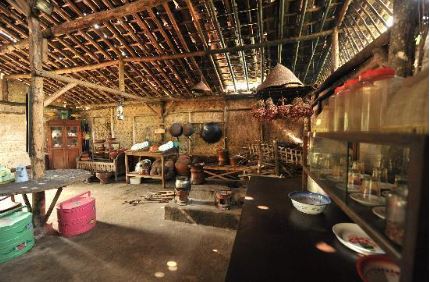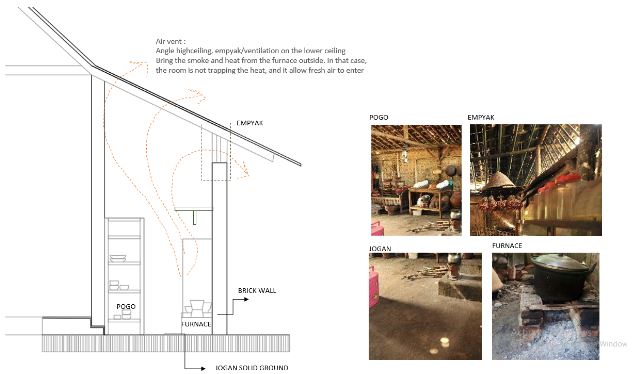“Cuando pueda cocinar ya se puede casar”
“Jika kau bisa memasak, maka kau bisa menikah”
Ibuku, María Eugenia Lizano
There is a lot to say about cooking and women in the territory known today by the colonial term: “Latin America”, known by indigenous peoples in the area as: “Abya Yala” which means: “Thriving Land”.
But before talking about cooking and oppression let’s start from the beginning: skin color.
Before the spanish* invaders arrived in Abya Yala every single person in the continent had “kulit sawo matang”. The spanish colonizers were the first people seen with white skin in the whole region. A few decades after they settled in the continent, they learned the culture, the language, and the routes that led to gold, silver, water, and food, they attacked and started colonizing the entire continent.
They destroyed sacred places, enslaved women, men, and kids, forced native people to build churches and convert to Catholicism. They stole sacred artifacts, kidnapped brown people, and put them in human zoos. They brought with them diseases unknown to the natives and with no immunity to these diseases native people died faster than people dying from the COVID19 pandemic.
The british* colonization of the areas known today as Canada and the United States of America, (known before by indigenous peoples as “Turtle Island”) and the spanish* colonization in Abya Yala had a devastating effect on the native population. Within a short period of time their way of life changed forever. The changes were caused by a number of factors, including loss of land, disease, enforced laws that violated their culture, sovereignty, and organization system.
White men were desperately trying to “cleanse” the race and put themselves at the center of society and beauty standards. After mass campaigns of genocide and the systematic raping thousands and thousands of brown indigenous women, children were born, and these children started to have lighter and lighter skin.
The assimilation period was essentially a process of “whitening” suffered by indigenous people. Forcing them to be less and less indigenous and more european. Not only by getting lighter kids by skin color, but by forcing indigenous people to abandon their culture or be pushed to the fringes of the eurocentric settler-colonial state.
To break their spirits and their connection to their culture settlers forced indigenous people to cut their long hair, change their traditional clothing to european formal clothing, and discontinue tattooing, body adornment and abandon all cultural signifiers that identified them as other in favor of assimilating into a white christian world.
This is the reason why there are a lot of people with white skin in Turtle Island and Abya Yala, because the colonizers wanted to create a new europe in indigenous land. Europeans didn’t have another purpose, they wanted to exterminate indigenous people and spread their genes at all costs.
Why not make up a new entire race to trick indigenous people into believing that they are not indigenous anymore because europeans say so? And so the word “Mestizo” was born.
“Mestizo” or “mestiza” means “Mixed blood”, this was the race created by the colonizers that was assigned to every single mixed indigenous person born after the colonization in Abya Yala. They were so focused on erasing indigenous peoples that they created a colonial caste system with 16 different races to erase their own. Through several social traps, over the years, Aymara, Huetar, Bribri, Kuna, Quechua, Cabecar, Telire and every single tribe started to dwindle in number. People left these Nama Suku behind and started calling themselves “Mixed blood”: “Mestizo”, the first label they created after mixing a european and a indigenous person.
Indigenous people were forced to deny their own identity because under the spanish empire, “Mixed blood” would always have more rights and voice in society than any indigenous group.
Contrasting with Indonesia, my soul envies Indigenous people from here because they had better luck preserving their identitas suku: Javanese, Balinese, Bataknese, Sundanese, Dayak and all the others still have their indigenous identity, traditions, language, gastronomy, and cosmology. In Costa Rica, where my family is from, the Huetar people were almost erased from history. There is no religion. There are no traditional textiles. There is no traditional food. Not even an indigenous language was preserved.
But not everything is lost. Thanks to our ancestras (female ancestors) that ran away from indigenous communities into the mountains and got away from the white man. There are still today people with kulit sawo matang in every single country in Abya Yala and Turtle Island.
With the birth of the State, Indigenous people lost their rights. The land was given new names by the colonizers, and along with them a new social-cultural set of unknown rules. Women were now doomed to be in the kitchen. No opportunities to study, to decide on what career they wanted to pursue, or even time for themselves. “Los valores de la familia tradicional” (Traditional family ́s Values) forced a new set of ideas, behaviors, and expectations for women. After decades and decades of Spanish people ruling every aspect of indigenous peoples life. Women were expected to only be able to have kids. They were expected to be fertile. If they couldn’t have kids they were a failure. Even then, if the kids were spoiled, they were bad mothers. Women were expected to cook three meals a day for the family and clean the entire house by themselves. If they didn ́t they were dirty and irresponsible. And of course, a woman was expected have sex every time her husband wanted to even if she was not in a mood for it, and that would never be considered rape.
It’s impossible to talk about gender and socio-economic class without talking about skin color. The majority of women who didn’t finish school worked in the informal sector, had low incomes, and belonged to the working class for generations were brown women not white women from Costa Rica. This is still the situation today.
Colonization laid the foundations for a society that made sure white skin descendants of europeans maintained their position at the top of the ladder. Meanwhile, brown women born in the same country, until today don’t have the same economic status, don’t have the same opportunities, and face bigger challenges and racial violence every day.
Brown women are the ones cooking for white women. Brown women are the ones who stay at home cleaning houses when white women are outside, brown women are the ones who face discrimination based on their skin color, their job, and their background.
When it comes to feminism and fighting for women’s rights it’s kind of exclusionary to think that women that clean the house, raise the kids, and cook all day and every day have no way to feel empowered and build resistance from their kitchens.
“Socializing spaces in the kitchen can be used as a device to acquire and reinforce healing processes through resilience. This allows, to recognize inter and intrapersonal dynamics that build a sisterhood that takes place in the kitchen, thus managing to resignify the kitchen space in women as a potentiator of transformative processes of subjectivity” (Almanza Salazar,D. Parra Peña, AM, 2016, pág 3)
Being in the kitchen and spending many long hours there together, give women the opportunity to pass knowledge from generation to generation, to develop coping strategies, strengthen ties with other women and resignify past experience, current reality, and dreams.
Even though cooking and being in the kitchen could be for some women an empowering job, it is important to acknowledge that there is a lot of machismo (a system of oppression against women) that dismiss women and their work.
Society gave women the role of “Savior”. A savior woman understands that everyone else in the family is more important and comes before her. She is forced to work all day in the service of the family and receives a lack of financial retribution, continuous physical and emotional work, overtime and related health issues.The famous Abya Yala saying: “Quitarse el bocado de la boca” (take the bite out of your mouth) illustrates this well. It refers to the custom that women have when they decide to eat what’s left after their children and their husband have already eaten.
This abusive and exploitative cycle reminds women that every time that they go out to buy vegetables and fruits, they have to come back home soon to cook for those that are resting, without any economical remuneration, totally ignored unless they don ́t fulfill their husband’s and children’s expectations. Where different dynamics and power dimensions would remind her of inferiority and her responsibility as a caregiver.
It’s undeniable the oppression experienced by women in the kitchen but it is also true that women from Java, Bali, Kalimantan, Sumatra, Sulawesi, New Guinea, Abya Yala, and Turtle Island have the possibility to turn this space into an empowering reality by demanding that their husbands to learn how to cook, divide chores in the kitchen and have their own income.
british / spanish*: I refuse the use of capital letters to address the nationalities of colonizers.
Bibliography
American Indian COC. (2021) Native American Tribes and the Indian History in Chino Valley, Arizona. Amercanindiancoc.org https://americanindiancoc.or
Almanza Salazar,D. Parra Peña, AM. (2016) La cocina como espacio de empoderamiento, resignificación y sororidad en las mujeres. ¿Conversaciones en torno al fogón?. https://repository.javeriana.edu.co
Tabrizy, N. (Nilo). (October, 2021). New York Times. Searching for the lost graves of indigenous children. https://www.youtube.com/watch?v=iXKZ
UN WOMEN. (July, 2020) Intersectional feminism: What it means and why it matters right now https://www.unwomen.org/en/news














